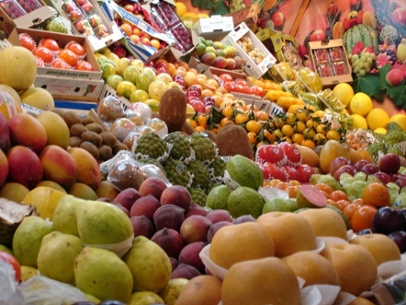Healthy Eating on a Budget
At Jump In, one thing we hear a lot is that healthy food costs more than unhealthy food and that makes it harder to stick to a nutritious diet every day. While it’s true that some processed food is, per calorie, cheaper than fresh food, there are lots of ways to maintain a very healthy diet while watching your budget. Pantry staples like beans and whole grains (rice, quinoa) are low-cost and important to a healthy diet. Eggs are an inexpensive source of good protein. And fresh, seasonal produce is especially plentiful at affordable prices this time of year when there are farm stands and farmers markets around town. Many farmers markets accept SNAP and some will even double the SNAP benefit for the products sold there. Here is a list of greater Indianapolis farmers markets this time of year, and here’s another of farmers markets that run in the fall and winter.

How about that seasonal produce? You’ve probably noticed that certain fruits and vegetables go on sale at different times of the year. That’s because of when the produce is harvested. Eating fruits and vegetables in season can help save money and give you a wide variety of fruits and vegetables to choose from all year long. In the fall, look for apples, squash (including pumpkin!), broccoli, brussels sprouts and everything on this list. In the winter, stick with citrus fruits, dates, sweet potatoes and everything on this list. In the spring, stock up on honeydew, rhubarb, pineapple, strawberries and all of these. Right now, in the middle of glorious summer, you can indulge in corn, tomatoes, berries, cherries, eggplant, and this whole long, luscious list. Summer definitely has a growing advantage over the other seasons, but as you can read, each season offers a wide variety to suit all kinds of tastes – and plenty of new fruits and vegetables to try.

Many more tips on ways to save money while making healthy choices come straight from the U.S. Department of Agriculture (USDA). Planning meals and grocery lists ahead of time, reading labels – all these can help inform you to be better educated and a savvier shopper and eater. Here’s the complete list, and it includes some terrific recipes:

- Plan Your Weekly Meals
- Make a Grocery List
- Save More at the Store
- Tips for Every Aisle
- Understand the Price Tag
- Read the Food Label
- Kitchen Timesavers
- Cooking for Your Family
- Tasty & Low-Cost Recipes
- Sample 2-Week Menus
- Resources for Professionals
With a little information and a little planning, you can make healthy choices for yourself and your family all year long while sticking to your budget. Bon appetit!
Topics: Healthy Eating, Uncategorized
Subscribe for more
Want more ideas for healthy schools, workplaces, child care providers, and families? Subscribe to our blog for weekly tips delivered right to your inbox!
8 Tips: Eating Healthy When Eating Out NEXT »
A Parent's Guide to School Wellness Policies
